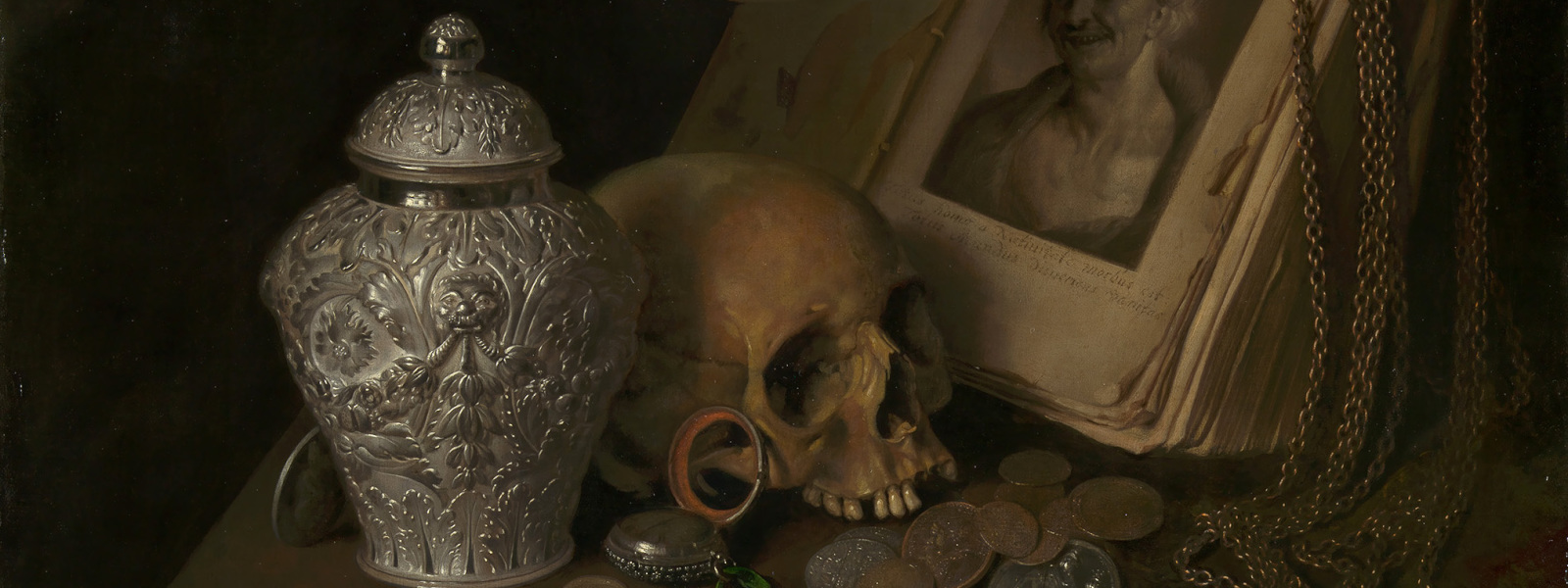Still-life paintings in the Royal Collection
An extremely popular format in 16th and 17th century Europe

During the sixteenth and seventeenth centuries in Europe, still-life paintings became an extremely popular art form. These paintings usually depicted inanimate objects, including everyday household items, flowers, fruit and food. At this time the genre took on greater symbolic significance, and the objects came to reflect a person’s pride in everyday life or their learned interest in science and botany. These paintings could also act as memento mori, reminding viewers of the transitory nature of life.
Still-life painting became particularly prevalent in the United Provinces, now The Netherlands. The Netherlands had gained independence from Spain at the beginning of the seventeenth century and was enjoying a period of prosperity now known as the Dutch Golden Age. During this period, a large and wealthy merchant class emerged, and art became a way to demonstrate their new power and status. However, instead of purchasing mythological, historical or biblical scenes, typically associated with learning and grand collections, they acquired paintings depicting the successful society they were a part of and the everyday possessions that they owned.
The Dutch art market expanded enormously during this period and still-life artists developed particular specialisms to single themselves out from their contemporaries, often depicting the same groups of objects to carve out their niche. For example, Willem Claesz Heda specialised in depicting half-eaten meals often with a white tablecloth, silver tazza and partially peeled lemon, whilst Melchior Hondecoeter specialised in painting exotic birds in outdoor settings. Tables laden with food and vases of flowers offered artists opportunities to capture varying textures and surfaces, from pewter plates to reflective glass vessels, the rind of a lemon to the filling of a pie.
Artists like David Teniers and Willem van Mieris chose to incorporate still-life elements into larger genre scenes, allowing them to demonstrate a range of painterly abilities. Other artists collaborated on paintings, each focusing on their chosen specialism to create a masterpiece that contained both a sumptuous still life as well as perfectly rendered, characterful figures. For example in Pythagorus Advocating Vegetarianism, Franz Snyders painted the cornucopia of fruit and vegetables, whilst Peter Paul Rubens painted the figures.
Although still life became popular on the continent, Britain did not develop a similar tradition in the seventeenth century. However, the genre was popular with royal collectors. Still lives have entered the collection during the reigns of many monarchs including Charles I, Charles II and George IV, although George IV’s preference was for Dutch genre scenes over still-life paintings.
William and Mary, Queen Anne and George III and Queen Charlotte were also fond of still lives, particularly flower paintings. Inventories of Kensington Palace from the reigns of Anne, William and Mary show that a number of flower paintings by artists such as Maria van Oosterwyck, Jean Baptiste Monnoyer and Jacob Bogdani were on display.
Queen Charlotte was a keen botanist. In the 1790s the queen commissioned several flower paintings and a large flower mural from artist Mary Moser to decorate a room at Frogmore House, now known as the ‘Mary Moser Room’. Queen Charlotte and her daughters were keen artists and studied under Margaret Meen and Francis Bauer, who specialised in flower and botanical painting.







